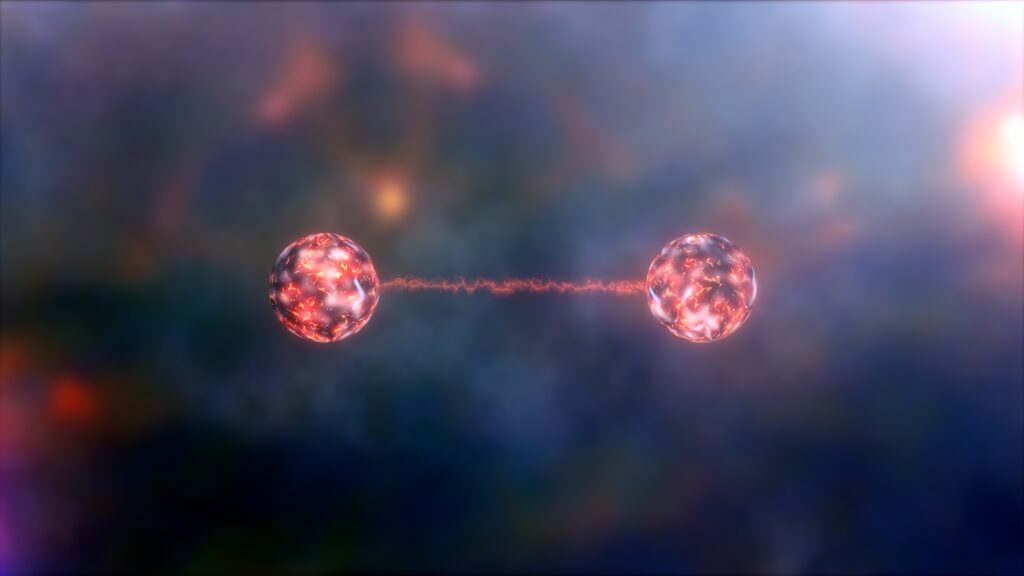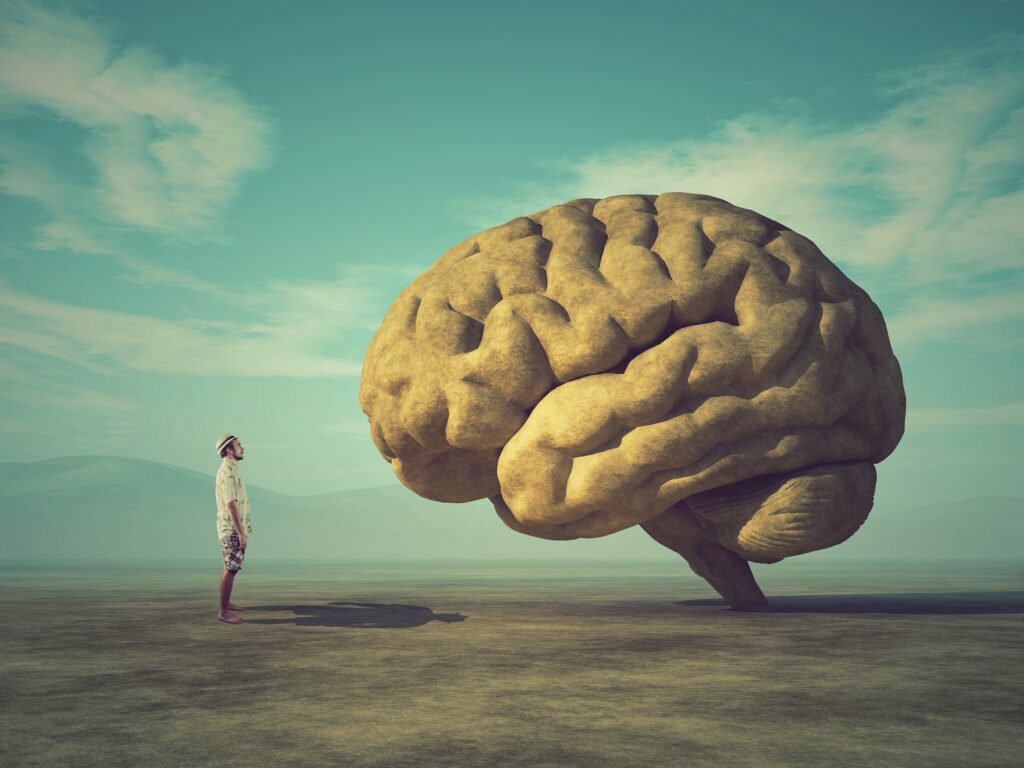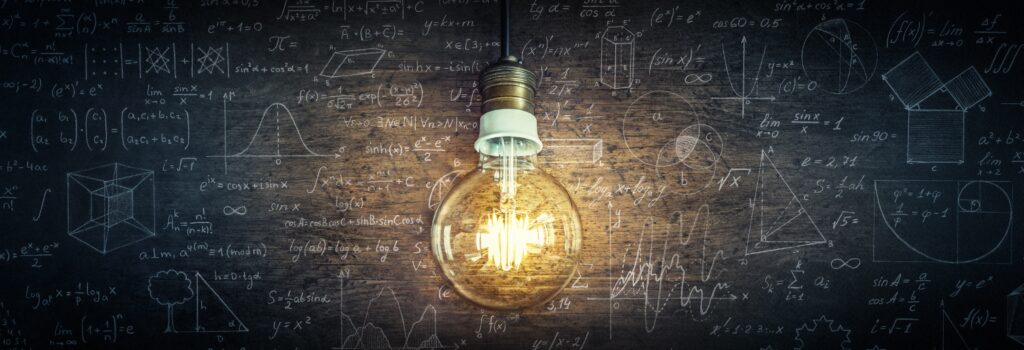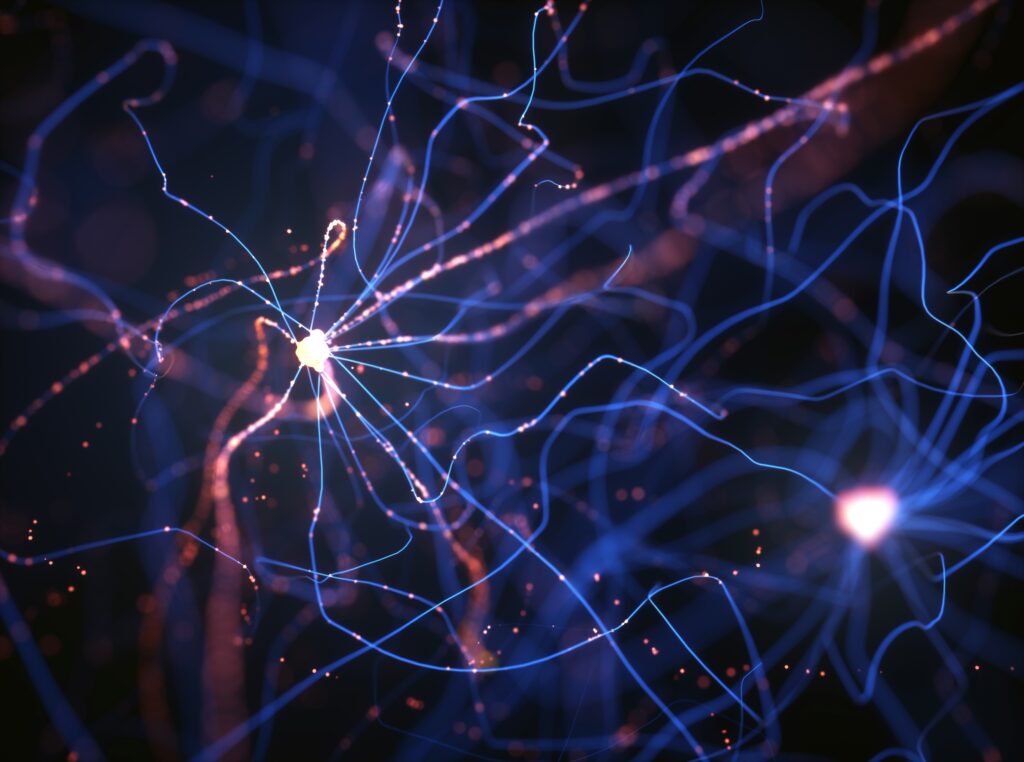An objective science of subjective experience
Reading | Phenomenology
![]() Dr. Graham Stew, DPhil. | 2022-10-09
Dr. Graham Stew, DPhil. | 2022-10-09
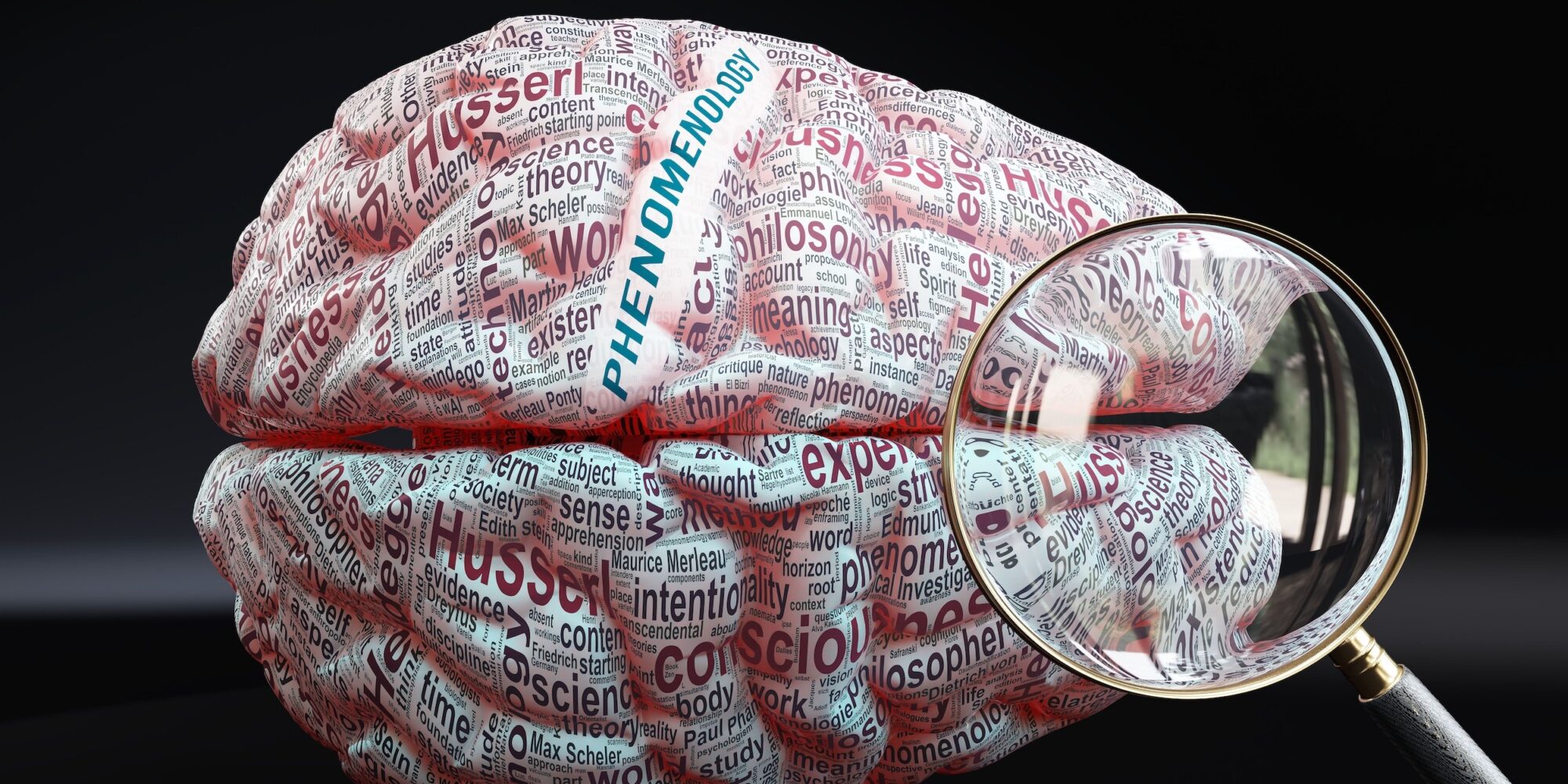
The West has attempted to develop its own methodology for the objective study of our conscious inner states: phenomenology. A work in progress as it still may be, it provides an antidote to naive positivistic attitudes that have dominated science until very recently. Dr. Stew reviews the historical timeline of this methodology and relates it to materialism and idealism. In so doing, he provides a systematic framework for understanding much of what Essentia Foundation publishes and promotes. This is the first part of a two-part series that will be continued next week, so stay tuned for the follow-up.
Right now, as you read these words on this page, you are presumably having a conscious experience. If you stop and ask yourself: ‘Am I conscious now?’ the answer will naturally be ‘Yes.’ But how do you know? And what does being conscious mean? If we are honest, we cannot even begin to understand consciousness. It is the most obvious and intimate of things, but philosophers and scientists have failed to produce any convincing explanations, and it remains a total mystery.
Is it possible for the eye to see itself, or to know that which is knowing? The conclusion is that the subject of consciousness always eludes us, as it is its own object.
Social researchers, and in particular phenomenologists, seek to understand the inner world of our feelings, attitudes, sensations, and the meanings we attach to our experience. The resulting research ends up describing and interpreting (sometimes even explaining) our subjective experience and behavior, without considering the origin of these phenomena. It is like being fascinated by the images on a TV screen, whilst ignoring the electricity and broadcasting system that produce them.
This essay sets out to explore consciousness and experience, the fundamental aspects of being human. Using phenomenology—the study of the phenomenal [Editor’s note: that is, the experiential appearances]—as our focus, we shall address the noumenal, that which is the source of all appearances. Western science and eastern philosophy will be visited in our search, and a range of theories will be discussed. In so doing, I shall be challenging our Eurocentric views of consciousness, awareness and experience.
Phenomenology
Phenomenology is defined as the study of the objects of consciousness, as they appear to individual awareness. From the Greek phainomenon, meaning appearance, phenomena are the sensations, thoughts and perceptions that constitute the totality of our lived experience. The emphasis of phenomenology is on the world as lived by individuals—their ‘life-world’—not the world or reality as something separate from subjective experience. This approach to research asks ‘What is this experience like?’ as it attempts to explore meanings as they are lived in everyday life.
Phenomenology, as a branch of philosophy, has a long history originating in the work of Plato and his distinction between sensory and abstract experiences. The themes of phenomenology were explored by Kant, Schopenhauer, Berkeley and Hume, but became prominent at the end of the 19th century as a result of the work of Franz Brentano (1973) and William James (1890). The inner subjective world, capable of exploration through introspection, became a focus of interest as a reaction against the objective materialism of science.
The founding figure of phenomenology, Edmund Husserl (1859-1938), sought to establish an equally rigorous science of subjective experience. The intention was to investigate methodically the essential structures of consciousness, whilst adopting the ‘phenomenological attitude’, where prior understanding and knowledge were deliberately suspended; the so-called ‘bracketing’ or epoché. This suspension of the ‘natural’ pre-reflective attitude was intended to open the researcher’s mind to broader possibilities of meaning. Objects of consciousness could therefore be described in terms of their essential and invariant features; those characteristics of a phenomenon without which it could not be regarded as such.
An epistemological emphasis was evident in the desire to formulate objective accounts of subjective phenomena, e.g. the experiences of loneliness or of becoming a parent. The emphasis is on the reduction of associations and meanings to a specific and pure description of such experiences, in order to increase our understanding and establish a science of consciousness. In not denying the existence of an external world, it could be argued that Husserl inadvertently re-instated the subject-object division that was then regarded as the flaw in logical positivism.
Later phenomenologists, such as Martin Heidegger (1889 -1976), developed a more ontological focus, with an interest in interpreting the socio-cultural and historical context of experience. There was an acceptance of researchers’ pre-understandings as a necessary and inevitable component of any inquiry, and any attempt at ‘bracketing’ prior assumptions was abandoned. For Heidegger, to be human is to be an interpreter of experience, and all understanding is an act of interpretation.
All phenomenologists claim to explore ‘lived experience’ and the phenomena that appear to consciousness. However, there are differences in the emphasis of this process, in that researchers will either attempt to describe or interpret individuals’ experience. They can ask: ‘What is this experience like?’ or ‘What is it like to be a person living with this experience/disease?’ There is a clear shift between an epistemological (knowing) and an ontological (being) focus: a subtle but significant distinction. Either there is a reductive focus on essential features of an experience, or an inclusive acceptance of contextual factors; either a bracketing out of prior understanding, or a mutual co-construction of meaning between researcher and participant.
This essay is not concerned with the internal arguments between phenomenologists, and so the detailed differences between the various schools of thought will not be discussed in depth here. Some aspects of both descriptive and interpretive approaches will be revisited later, where appropriate. To summarize, phenomenology is concerned with understanding the meaning, impact and significance of experience for individuals. It does not claim generalizability and does not seek to generate theory. Instead, phenomenologists argue that achieving deep and meaningful insights into how individuals perceive their experience (e.g. pain) will provide for more sensitive and aware responses (e.g. in health professionals).
Phenomenology, as a research methodology, is not well charted, as phenomenological philosophers tended not to undertake research, and left no models or ‘recipes’ for investigating conscious experience. We do, however, have some guidance from recent writers such as Giorgi (2009), as a descriptive phenomenologist, and Smith et al. (2009), who employ an interpretive approach in interpretative phenomenological analysis. We also have earnest debates over just what constitutes phenomenology (e.g. van Manen, 2017), and whether hermeneutics can be regarded as having a role within phenomenology. Other phenomenologists, such as Merleau-Ponty and Gadamer, have stressed the embodied nature of experience and the importance of language. Researchers therefore need to reflect on the fundamental purpose of their inquiries and adopt a methodology consistent with these aims.
What seems to be missing from much current debate is the nature of our inner subjective world. Just what is consciousness and what do we mean when we talk about experience? The following sections of the essay will take phenomenology’s central focus of consciousness and experience and explore what these concepts might mean. No conclusive answers will be revealed, as these matters remain a mystery to both philosophers and scientists. However, some general remarks on the implications for today’s researchers, and a few more questions, will be discussed.
What is consciousness?
Ask yourself again: ‘Am I conscious now?’ If the answer is ‘yes,’ what are you conscious of? Phenomenologists will assert that we are always conscious of something, be it a thought, sensation, or emotion. Whatever becomes the focus of our attention is an object of consciousness, an act of reference. This direction of attention toward a phenomenon appearing in consciousness was termed ‘intentionality’ by Franz Brentano (1838 – 1917). Thus, we are always conscious or aware of or about something, and Husserl’s phenomenology was based on this intentionality of consciousness. Not only is consciousness always directed towards an object, but every conscious experience exists as a noema. Husserl used this term to represent the object or content of a thought, judgement, or perception, but scholars are still unsure of its precise meaning in his work. Noesis is the apprehension or intellectual reasoning that perceives the object of consciousness (the noema).
Husserl (1980) also described pure foundational consciousness as a transcendental subjectivity that is achieved through the phenomenological reduction known as epoché. As previously described, this is the deliberate identification and suspension of the so-called pre-reflective or ‘natural’ attitude. This attitude consists of our prior understanding, assumptions and all theoretical knowledge related to the object in question. Through this ‘bracketing’ of fore-structures of understanding, Husserl argued that the pure and essential structures of an experience can be revealed and described. In this sense, he could be regarded as an idealist, asserting that subjective experience was the ground of absolute existence and that an apparent external world consisted only of consciousness (Puligandla, 1970).
But let us return to our central question: what does it mean to be conscious? We perceive an unconscious ‘material’ world and wonder where consciousness comes from. I am using the term ‘consciousness’ in this chapter to mean all the sensory and mental events of awareness. These include the sensations of colors, shapes, sounds, tastes, smells and touch, and all mental thoughts, feelings, memories and images. Thus, I am referring to the phenomenon of being conscious, rather than to the neurological processes that make these subjective experiences possible.
Right now, I am conscious of a Mozart symphony. I know that sound waves are reaching my ears and being converted into action potentials, which travel along the cochlear nerves to my auditory cortex. What happens to transform these electrical and chemical activities into the subjective experience of beautiful music? How can a few pounds of grey, wet tissue create the smell of coffee, the taste of a peach, and even images of non-existent objects, such as centaurs or unicorns? Why should several billion interacting neurons give rise to a subjective sense of presence of simply being here?
This is the ‘hard problem’ famously defined by David Chalmers: “The hard problem is the question of how physical processes in the brain give rise to subjective experience” (Chalmers: 1995b: 63).
The ‘easy’ problems of consciousness have been tackled over the last century and include cognition, attention, sleep, behavior, and memory. Functional MRI scans have told us much about neural activity within the brain, but the ‘explanatory gap’ between the objective material brain and the subjective world of experience remains unbridgeable. Some neuroscientists insist that once all the easy problems have been solved, the hard problem will disappear. Others are not so optimistic, suggesting that there is no way that science can explain consciousness, because consciousness is what knows science (Wallace, 2000). Let us look at some of the theories that have been proposed to explain the mystery of consciousness or, as Alan Watts (2017) put it, to ‘eff’ the ineffable.
Philosophical and psychological theories of consciousness
The first recorded accounts of human consciousness can be found in the Indian Upanishads and other Vedic scriptures, dating back to the 6th century BCE, and predating the Greek philosophers who laid the foundations for Western philosophy. I shall be touching on the non-dual viewpoint of Advaita Vedanta later, but basically consciousness here is seen as the source of all experience, and that all experience appears within conscious awareness. Existence and awareness of existence are inseparable. Non-dual awareness contains subject and object, and there are no external physical objects.
Indian and Buddhist philosophy view self-luminous consciousness as revealing itself to itself. There is no self or ego separate from consciousness, but the story of the self is constructed through the conditioned interpretation of experience. Buddhism thus denies the existence of a persisting self, which is simply viewed as a series of transient perceptions giving the illusion of continuity.
A contemporary philosopher and consciousness researcher, K. Ramakrishna Rao (2011 : 335), states:
Consciousness in the Indian tradition is more than an experience of awareness. It is a fundamental principle which underlies all knowing and being … the cognitive structure does not generate consciousness; it simply reflects it; and in the process limits and embellishes it. In a fundamental sense, consciousness is the source of our awareness. In other words, consciousness is not merely awareness as manifest in different forms but it is also what makes awareness possible … It is the light which illuminates the things on which it shines.
Materialism and Idealism
We now come to the debates between materialists and idealists, and between dualists and monists. The arguments are complex and often hidden behind obscure and difficult concepts, so I shall attempt to keep things simple.
Monists argue that there is only one kind of stuff in the universe, whilst dualists claim that there are two kinds of stuff. Perhaps the best-known dualist theory is that of René Descartes (1596-1650), who theorized that there are two realms of existence, the physical and the non-physical spirit or soul (Cartesian dualism). He proposed that the brain and the mind were made of different substances; that the brain and body were physical and made of matter, whilst the mind and all mental activity were non-physical. The problem with this proposal is evident: how do the two interact? Descartes suggested that they met at the pineal gland, situated in the center of the brain, but provided no explanation of how the physical realm communicates with the mental. As Susan Blackmore (2005: 4) points out:
This problem of interaction bedevils any attempt to build a dualist theory, which is probably why most philosophers and scientists completely reject all forms of dualism in favour of some kind of monism; but the options are few and also problematic.
Monist theorists argue that either the mental world is foundational (idealism), or that all things consist of matter (materialism). A century after Descartes, the philosopher George Berkeley (1685 – 1753) claimed that all experience of the world arises from mental perception. Samuel Johnson famously rejected this theory by kicking a large stone and asserting, “I refute it thus!” This action merely dismissed Berkeley’s argument, rather than proving the existence of the stone was independent of its perception.
Idealism and monism have a long history as Indian and Buddhist thought embrace this perspective. Here the world and all objects are viewed as the products of consciousness and mental activity, and the idea of an external and independent world is rejected. Consciousness is the primary reality, the physical world being ultimately illusory (Watts, 1976; Loy, 1988; Waite, 2007; Timalsina, 2009).
Materialism is a monist position and maintains that primary reality is physical, the mind being the physical and functional properties of the brain, and having a scientific explanation. Consciousness has a physical basis and is an epiphenomenon in that it derives from brain activity. An objective world exists independently of the observer. This reductive materialism remains the dominant paradigm for the world’s scientific community and positivist research generally. Neuroscientists are seeking the neural correlates of consciousness and believe they will ultimately identify the physical source of mental experience. The frustrating anomaly for the current paradigm is consciousness itself; it cannot be doubted and yet it cannot be explained.
Our everyday experience suggests that somewhere inside our heads is a small person who is watching the outside world, making decisions and controlling our actions. This ‘I’ is sitting in what Daniel Dennett (1991) has termed a “Cartesian theatre,” and here we experience sensations, thoughts and feelings; the whole ‘show’ of life as a stream of consciousness. Dennett rejects this notion, as the brain simply does not work this way. Information is received by different centers and is distributed for purposes to many areas of the cerebral cortex. There is—as yet—no known place or process in the brain that could be responsible for producing conscious experience. There is no way in which all sensory input can be brought together in one ‘seat of consciousness,’ and there is no little person to experience and act upon the unfolding appearances. So perhaps the theatre has no audience, and we are participants rather than spectators?
The tool we use for wrestling with these questions is the human mind. A major challenge is that we cannot be certain anything exists outside the mind, because the mind is the main agent for exploring this question. Apparently, there is a German word that captures the problem: unhintergehbarkeit. The nearest translation is something like: ‘ungetbehindability’. We are stuck with our minds—which appear in consciousness—and there seems to be no way to get behind them; until they fall silent and then… maybe?
The development of psychology
William James (1842-1910), the father of modern psychology, advocated introspection to study the stream of consciousness; the continuous flow of sensations, images, thoughts and feelings that we experience. His approach was predominantly monist in that he rejected dualist concepts and placed consciousness at the heart of his psychology, viewed as the science of mental life. Introspection had been initially developed by Wilhelm Wundt (1897) and Edward Titchener (1901), who were keen to make systematic and reliable observations of inner experiences such as attention and sensation.
This interest in the inner life was developed further by Sigmund Freud (1915) with his theories of the unconscious and psychoanalysis. Elsewhere in Europe, the emerging concepts of existentialism and phenomenology were regarded as significant. As we have seen, Husserl’s (1970) seminal work in phenomenology sought to ‘get back to the things themselves,’ and develop a systematic approach to investigating conscious experience. This interest in establishing a transcendental science of consciousness is challenged by its very subjectivity: how can one decide between conflicting claims for private experience?
These problems led to the study of introspection being superseded by a movement in psychology that dominated most of the twentieth century: behaviorism. Behaviorists such as John B. Watson (1924) and B. F. Skinner (1953) dismissed introspection and consciousness as irrelevant to the objective and measurable science of psychology, whose goal was the prediction and control of human behavior. The dominant paradigm of scientific materialism has regarded subjectivity as something of a taboo (Wallace, 2000), and this view has restricted systematic inquiry into the nature and potential of consciousness.
The dominance of behaviorism continued until the 1980s. Mental states and attitudes, problem solving and cognitive processing were all investigated, but no true introspection into one’s inner life (as advocated by James) was undertaken seriously. The current metaparadigm of western science still asserts that the real world is the material world, and that space, time and energy are primarily by-products of insentient matter.
This unquestioned assumption of materialism, and other theories, were explored and challenged in the 1980s and 90s by a wide range of writers who have revived the science of consciousness (Baars, 1988; Dennett, 1991; Penrose, 1995; Crick, 1994; Lycan, 1996; Chalmers,1996). The new interest in the nature of consciousness has also resulted in a proliferation of published research and related journals (e.g. The Journal of Consciousness Studies, Consciousness and Cognition, Psyche), and also the creation of professional societies and conferences, e.g. the Association for the Scientific Study of Consciousness (ASSC).
Yet still: “Human consciousness is just about the last surviving mystery” (Dennett, 1991: 21). Centuries of philosophical and scientific inquiry have not produced any means by which consciousness can be detected, and we do not know what exactly is to be measured. As Wallace (2000) points out, at present there is no scientific evidence even for the existence of consciousness. We only have our own first-person accounts of what it means to be conscious.
We understand a great deal about perception, visual attention, reactions to stimuli, and various cognitive and behavioral functions. But why are they accompanied by subjective experience? Why should all these physical processes produce this sense of presence, this background hum of being, this inner life?
There may be no bigger question, but Western philosophers and scientists don’t have a clue what any answer would look like. For all its successes in explaining the working of the universe and improving human life, science has failed conspicuously to provide any convincing explanation of the very thing that conceived it: consciousness itself. As the famous astrophysicist Sir Arthur Eddington (1928) said: “Something unknown is doing we don’t know what!”
This essay was originally published in Critical Qualitative Health Research (2020), edited by Kay Aranda. London: Routledge. Chapter 7.
References
Baars, B. J. (1988) A Cognitive Theory of Consciousness. New York: Cambridge University Press.
Blake, W. (2000) The Marriage of Heaven and Hell. In The Selected Works of William Blake. Ed. Bruce Woodcock. Hertfordshire: Wordsworth Editions,195-206.
Blackmore, S. (2005) Consciousness: A Very Short Introduction, Oxford: Oxford University Press.
Blackmore, S. (2011) Consciousness: An Introduction, (2nd Edition), New York, Oxford University Press.
Bohm, D. (1980) Wholeness and the Implicate Order. London: Routledge.
Brentano, F. (1973) Psychology from an Empirical Standpoint. London: Routledge. (Original work published 1874)
Capra, F. (2010) The Tao of Physics: An Exploration of the Parallels Between Modern Physics and Eastern Mysticism. (5th edition) Boston: Shambhala Publications.
Chalmers, D. J. (1995) Facing up to the problem of consciousness Journal of Consciousness Studies. 2(3), 200–219
Chalmers, D.J. (1995b) The puzzle of conscious experience. Scientific American, Dec. 1995, 62–68
Chalmers, D. J. (1996). The conscious mind: in search of a fundamental theory. New York, Oxford: Oxford University Press.
Crick, F. H. (1994) The Astonishing Hypothesis: The Scientific Search for the Soul. New York: Scribners.
Dennett, D. C. (1991) Consciousness Explained. Boston: Little, Brown & Co.
Dreyfus, G., & Thompson, E. (2007) Asian perspectives. Indian theories of mind. In P. D. Zelazo, M. Moscovitch, & E. Thompson (Eds.) The Cambridge handbook of consciousness (pp. 89–114). Cambridge: Cambridge University Press.
Eddington, A. (1928) The Nature of the Physical World. Cambridge: Cambridge University Press.
Fasching, W. (2008) Consciousness, self-consciousness, and meditation. Phenomenology and the Cognitive Sciences, Volume 7, Issue 4, pp 463–483.
Freud, S. (2000) The Unconscious. London: Penguin Classics. (Original work published 1915)
Giorgi, A. (2009) The descriptive phenomenological method in psychology: A modified Husserlian approach. Pittsburgh: Duquesne University Press.
Heidegger, M. (1962) Being and time (J. Macquarrie & E. Robinson, Trans.). New York: Harper & Row. (Original work published 1927).
Heisenberg, W. (2000) Physics and Philosophy: The Revolution in Modern Science. London: Penguin Classics. (Original work published 1962).
Herbert, N. (1985) Quantum Reality: Beyond the New Physics. New York: Doubleday
Husserl, E. (1970) The idea of phenomenology. The Hague, The Netherlands: Nijhoff.
Husserl, E. (1980). Phenomenology and the foundations of the sciences. Boston: Martinus Hijhoff Publishers. (Original work published 1952).
James, W. (1890) The Principles of Psychology. New York: Holt.
Kastrup, B. (2014) Why Materialism is Baloney. Hants: John Hunt Publishing.
Krishnamurti, J. (2010) The Book of Life. San Francisco: Harper One.
Loy, D. (1988) Nonduality: a Study in Comparative Philosophy. New York: Humanity Books
Lycan, W. G. (1996) Consciousness and Experience. Cambridge, Mass.: MIT Press
MacKenzie, M. D. (2007). The illumination of consciousness: approaches to self-awareness in the Indian and Western traditions. Philosophy East and West, 57(1), 40–62.
Nagel, T. (1974) What Is It Like To Be a Bat? Philosophical Review 4: 435–50.
Parfit, D. (1986) Reasons and Persons. Oxford: Oxford University Press
Penrose, R. (1995) Shadows Of The Mind: A Search for the Missing Science of Consciousness. London: Vintage
Puligandla, R. (1970) Phenomenological reduction and yogic meditation. Philosophy East and West, 20(1), 19–33.
Rao, K. R. (2011) Cognitive anomalies, Consciousness and Yoga, vol. XVI, part 1 of History of Science, Philosophy and Culture in Indian Civilization, ed. D.P. Chattopadhyaya, New Delhi Centre for Studies in Civilizations / Matrix
Sartre, J-P. (1956) Being and nothingness. An essay on phenomenological ontology. New
Schrödinger, E. (2009) My View of the World. Cambridge: Cambridge University Press.
Skinner, B. F. (1953) Science and Human Behavior. New York: MacMillan.
Smith, J.A, Flowers, P, Larkin, M. (2009) Interpretative Phenomenological Analysis: Theory, Method and Research. London: Sage.
Spira, R. (2017) The Nature of Consciousness: Essays on the Unity of Mind and Matter. Oakland, CA; New Harbinger Publications
Stew. G. (2016) Too Simple for Words – Reflections on Non-Duality. Hants: O Books: John Hunt Publishing.
Tiller, W.A. (1997) Science and Human Transformation: Subtle Energies, Intentionality and Consciousness. California: Pavior Publishing.
Timalsina, S. (2009) Consciousness in Indian Philosophy: the Advaita doctrine of ‘awareness only’. Abingdon: Routledge.
Titchener, E. (1901) An Outline of Psychology. New York: Macmillan.
van Manen, M. (2017) But Is It Phenomenology? Qualitative Health Research; 27 (6). 775- 779.
Waite, D. (2007) Back to the Truth; 5000 years of Advaita. Winchester, UK: O Books.
Wallace, B. A. (2000) The Taboo of Subjectivity: towards a new science of consciousness. Oxford: Oxford University Press.
Watson, J. (1924) Behaviorism. New York: W. W. Norton.
Watts, A. (1976) Tao: The Watercourse Way. London: Jonathan Cape
Watts, A. (2017) In the Academy – essays and lectures. New York: SUNY Press
Wundt, W. (1897) Outlines of Psychology. Leipzig: W. Engleman.
Zahavi, D. (2005) Subjectivity and selfhood. Investigating the first-person perspective. Cambridge, London: MIT.

Essentia Foundation communicates, in an accessible but rigorous manner, the latest results in science and philosophy that point to the mental nature of reality. We are committed to strict, academic-level curation of the material we publish.
Recently published
Reading
Essays
Seeing
Videos
Let us build the future of our culture together
Essentia Foundation is a registered non-profit committed to making its content as accessible as possible. Therefore, we depend on contributions from people like you to continue to do our work. There are many ways to contribute.






